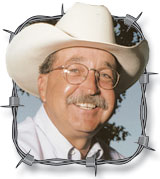I’ve always marveled at the fact that so many aspects of farming can be conducted in vastly different ways and yet achieve the same end result: success for the individual farmer. I guess that is one of the reasons the business has interested me for a lifetime.
I’ve observed two grain farmers with operations separated by a graveled country lane, raise the same crop on the same soil type, using completely different farming techniques, fertility rates, herbicide applications and marketing strategies and both ended up extremely successful at the end of their careers –and they each thought their way was the only way.
There have been dairy farmers that I’ve known, who went about producing milk in what I would term as opposite ways when it comes to feeding, breeding and milking their cows, yet each stayed in the business for years and was profitable most of the time. Again, each of them was convinced that they were doing it the right way.
And it’s not just neighbors that farm in different ways in order to successfully produce the same commodity that illustrates the point, for my own father thought that some of my methods in raising and producing beef cattle were, in his words, “downright stupid.” The jury is still out on whether he was right or not.
What started me thinking about all this is a conversation I had with a neighboring farmer last week at the local feed store. James, I’m guessing, is in his 70s and has been raising cattle his entire life. Because of the prolonged drought we have endured over the past couple of years, he decided to renovate some of his pastures by adding legumes to the grasses that have been depleted. “How would you get the legumes seeded?” he asked.
I thought about it for a few seconds and then started listing off a host of different ways. I told him that I rented a no-till drill from the county soil and water district a couple of years ago and got along quite nicely with that method. I added that a neighbor had mixed legume seeds with their livestock mineral and let the cows spread the seed as they ‘did their business’ around the fields. Also, farmers I’ve known mix it in with their fertilizer as they top-dress the fields in the spring while others scratch up the ground with a harrow or disk just before broadcasting the seed on the surface. I even pointed out that my dad always sowed the bare seed on top of the last snow of the spring and let the melting snow take it into the ground. “Yeah,” James responded, “but then I’d have to be smart enough to figure out which snow was the last.”
We talked about another couple of ways before he admitted that he had already planted his legumes into his pasture. “How’d you do it?” I asked.
“Well,” he began, “since my pasture is so short you could play marbles on most of it, coupled with the fact that I’m notoriously cheap, I just took my hay rake and set it as low as it would go to scratch the dirt up real good and then broadcast the seed on top and let the next rain cover the seeds with soil.”
“Sounds like it would work to me,” I responded.
“Yep,” he replied, “it was working great ‘til the ambulance showed up.”
“Ambulance?”
“One of my neighbors was watching me go ‘round and ‘round a bare pasture, pulling a hay rake in February, and called 911.”
Jerry Crownover farms in Lawrence County. He is a former professor of Agriculture Education at Missouri State University, and is an author and professional speaker. To contact Jerry, go to ozarksfn.com and click on ‘Contact Us.’







